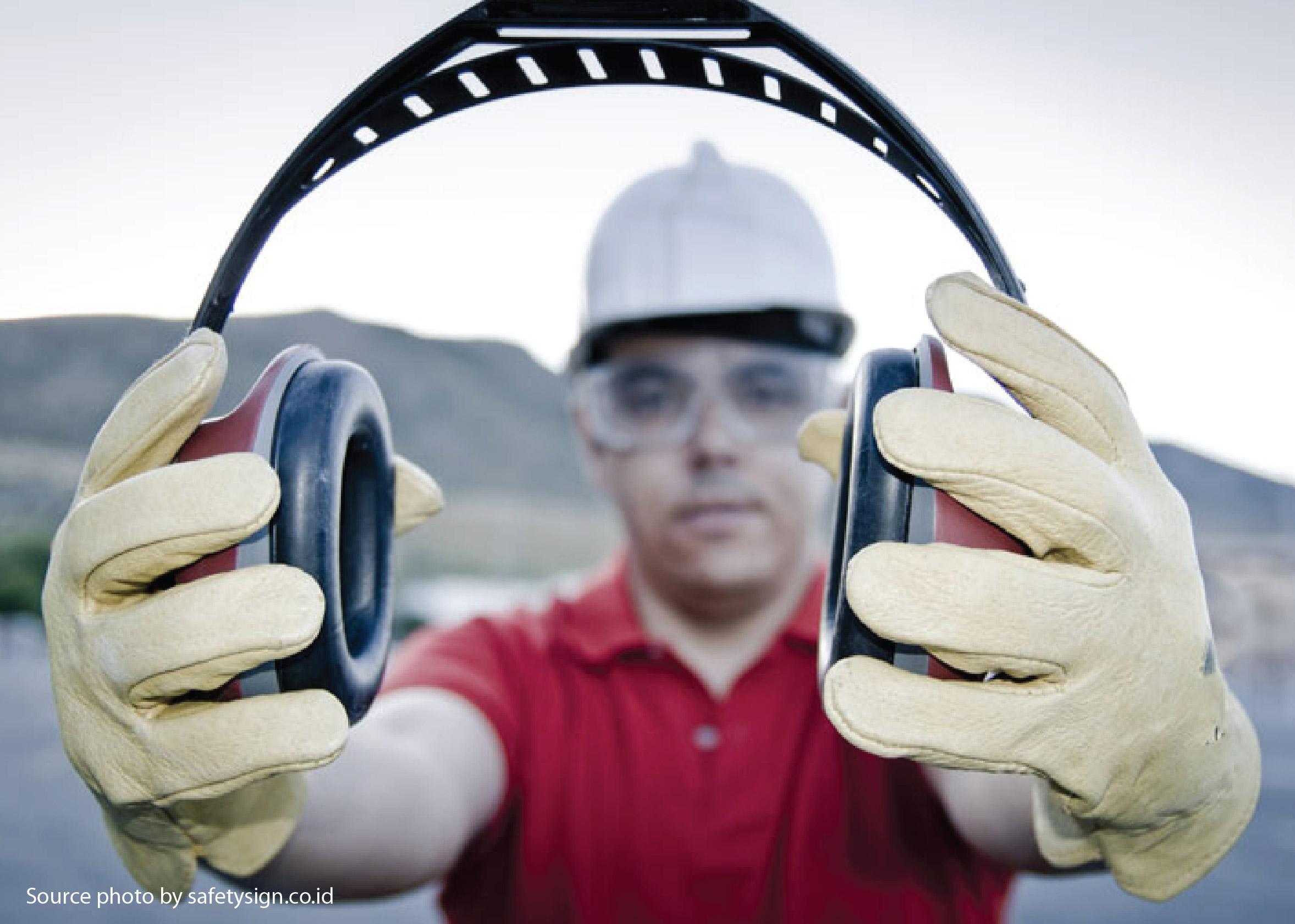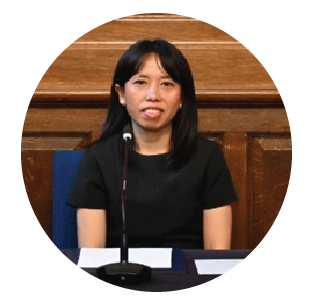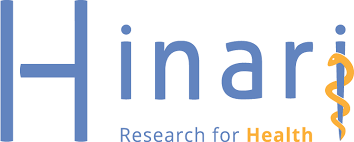THE RELATIONSHIP BETWEEN NOISE INTENSITY AND WORKER CHARACTERISTICS WITH HEARING DISORDERS IN DENTAL LABORATORY JAKARTA

Downloads
Background: Along with the development of processing goods using machine tools and equipment as well as the use of chemicals, one of the impacts is loud or noisy sound, which can be interpreted as unwanted sound or exceeding threshold and has an opportunity to damage hearing so that can be detrimental. Purpose: To analyze the relationship between the noise intensity and worker's characteristics with hearing disorders at the Dental Engineering Laboratory in the Jakarta area in 2020. Method: This research was an analytical study with a descriptive cross-sectional design with a sample of 30 dental technicians who work in a dental engineering laboratory in the Jakarta area. Each area is taken 6 people. Measurement of noise in the laboratory with a sound level meter and measurement of hearing loss with audiometry. Result: Workers whose noise intensity is >85 dBA have hearing loss, workers whose noise intensity is 85 dBA, 4 people who have hearing loss, workers aged >40 years have hearing loss, while among workers aged ≤40 years, there are 7 people experiencing hearing disorders. workers with >5 years of service experience hearing loss, while among workers 5 years of service, none have hearing loss. Conclusion: There is a significant between noise intensity with hearing loss (p-value = 0.011), it isn't significant between age with hearing loss (p-value = 0.0563), and it isn't significant between tenure with hearing loss (p-value = 0.06).
Achmadi, U.F., 2013. Kesehatan Masyarakat Teori dan Aplikasi. Rajawali Pers, Jakarta.
Aitbar, A., Abbasi, A., Marri, H.B., Nebhwani, M., 2011. Industrial Noise Pollution and its Impacts on Workers in The Textile based Cottage Industries: An Empirical Study. Mehran Univ. Res. J. Eng. Technol. 30, Pp. 35-44.
Amalia, L., Lanjahi, G., 2014. Pengaruh Intensitas Kebisingan dan Lama Tinggalterhadap Derajat Gangguan Pendengaran Masyarakat Sekitar Kawasan PLTD Telaga Kota Gorontalo. Universitas Negeri Gorontalo.
Anizar, A., 2015. Teknik Keselamatan dan Kesehatan Kerja di Industri. Graha Ilmu, Yogyakarta.
ANSI/ISO 14000 Series, 1996. Environmental Management Systems and Environmental Auditing.
Attarchi, A., Z, S., F, D., M.M, S., S, M., 2010. Assessment of Hearing Standard Threshold Shift Based on Audiometric Findings in Steel Company Workers. IRCMJ (Iranian Red Crescent Med. Journal) 12, Pp. 644-649.
Buchari, B., 2007. Kebisingan Industri dan Hearing Conservation Program. Universitas Sumatera Utara.
Budiono, B., 1992. Kebisingan sebagai Salah Satu Faktor Penyebab Akibat Kerja dan Cara Penanggulangannya. Maj. Bul. Keslingmas Pp. 4-13.
Halvani, G.H., Zare, M., Barkhordari, A., 2009. Noise Induced Hearing Loss among Textile Workers of Taban Factories in Yazd. J. Birjand Univ. Med. Sci. 15, Pp. 69-74.
Lubis, H.S., 2007. Program Perlindungan Pendengaran Pekerja terhadap Kebisingan. Program Studi Keselamatan kesehatan Kerja. Universitas Sumatera Utara.
Menteri Tenaga Kerja, 1999. Keputusan Menteri Tenaga Kerja Nomor KEP-51/MEN/1999 tentang Nilai Ambang Batas Faktor Fisika di Tempat Kerja. KEP.51/MEN/1999.
Menteri Tenaga Kerja, 2011. Peraturan Menteri Tenaga Kerja dan Transmigrasi Republik Indonesia Nomor Per.13/MEN/X/2011 Tentang Nilai Ambang Batas Faktor Fisika dan Faktor Kimia di Tempat Kerja. PER.13/MEN/X/2011.
Mohammadi, G., 2014. Occupational Noise Pollution and Hearing Protection in Selected Industries. Iran. J. Heal. Saf. Environ. 1, Pp. 30-35.
Nasri, S.M., 1997. Teknik Pengukuran dan Pemantauan Kebisingan di Tempat Kerja, Universita Indonesia Jakarta.
Rais, M., Djunaidi, Z., 2003. Analisis Hubungan antara Kebisingan dengan Keluhan Subyektif Pekerja (Non Auditory dan Auditory) di Departemen Power Pabelokan Tahun 2003. Universitas Indonesia.
Ramadhani, P.N., Firdausiana, Y.D., 2020. Noise Exposure and Hearing Loss on Field Operator Compressor House Area. J. Kesehat. Lingkung. 12, Pp. 126-135.
Septiana, N.R., Widowati, E., 2017. Gangguan Pendengaran akibat Bising. HIGEIA (Jurnal Publich Heal. Reserach Dev. 1, Pp. 73-82.
Siswati, S., Adriyani, R., 2017. Hubungan Pajanan Kebisingan dengan Tekanan Darah dan Denyut Nadi pada Pekerja Industri Kemasan Semen. J. Kesehat. Lingkung. Indones. 16, Pp. 29-36.
Subari, A., 2012. Hubungan antara Masa Kerja, Umur dengan Penurunan Daya Dengar Pekerja di PT. Mitsubishi Krama Yudha Motors dan Manufacturing [WWW Document]. Kesmas MHT.
Suma'mur, S., 2009. Hiegiene Perusahaan dan Kesehatan Kerja (Hiperkes), Cetakan 1. ed. Sagung Seto, Jakarta.
Supranto, J., 2000. Statistik Teori dan Aplikasi, Jilid 1 ed. Erlangga, Jakarta.
Tana, L., Halim, F.S., Ghan, L., Delima, D., 2002. Gangguan Pendengaran akibat Bising pada Pekerja Perusahaan Baja di Pulau Jawa. J. Kedokt. Trisakti 21, Pp. 84-90.
Tarwaka, T., 2014. Keselamatan dan Kesehatan Kerja; Manajemen dan Implementasi K3 di Tempat Kerja, Edisi 2, C. ed. Harapan Press Surakarta, Surakarta.
Tjan, H., Lintong, F., Supit, W., 2013. Efek Bising Mesin Elektronika terhadap Gangguan Pendengaran pada Pekerja di Kecamatan Sario Kota Manado, Sulawesi Utara. J. e-Biomedik 1, Pp. 34-39.
WHO, 2021. Deafness and Hear Lossing [WWW Document]. WHO. URL https://www.who.int/news-room/fact-sheets/detail/deafness-and-hearing-loss
Yulianto, Y., 2013. Faktor-Faktor yang Berhubungan dengan Gangguan Nonauditory Akibat Kebisingan pada Musisi Rock. J. Kesehat. Masy. Univ. Diponegoro 2, Pp. 1-11.
Copyright (c) 2021 Journal of Vocational Health Studies

This work is licensed under a Creative Commons Attribution-NonCommercial-ShareAlike 4.0 International License.
- The authors agree to transfer the transfer copyright of the article to the Journal of Vocational Health Studies (JVHS) effective if and when the paper is accepted for publication.
- Legal formal aspect of journal publication accessibility refers to Creative Commons Attribution-NonCommercial-ShareAlike (CC BY-NC-SA), implies that publication can be used for non-commercial purposes in its original form.
- Every publications (printed/electronic) are open access for educational purposes, research, and library. Other that the aims mentioned above, editorial board is not responsible for copyright violation.
Journal of Vocational Health Studies is licensed under a Creative Commons Attribution-NonCommercial-ShareAlike 4.0 International License














































